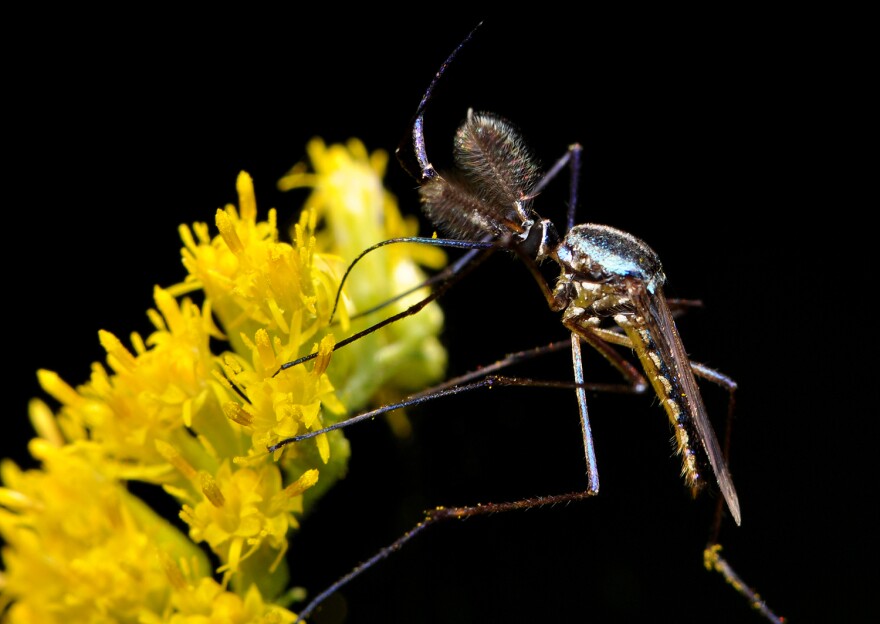What makes a fly a fly? Well sure, they have wings. But importantly, only two. The larger category for flies is Diptera, which tells you this if you break it down: In Greek, “di” means two (like divide or dialogue), and “ptera” means wing (like pterodactyl).
Lots of other insects have four wings, but flies’ back wings evolved into a set of gyroscopes that let the insects balance themselves in-flight and perform the twisting acrobatics that makes them hard to smack.
Peacock fly

Host Frank Stasio flies away with Diptera experts and . Bertone is the director of the Plant Disease and Insect Clinic at North Carolina State University. Goforth is the head of citizen science at the North Carolina Museum of Natural Sciences. BugFest: A Virtual Infestation is hosting remote events from Monday, Sept. 14 through Saturday, Sept. 19.
Goforth shares all sorts of on Friday from 10 to 11 a.m., and both Bertone and Goforth will co-present on Saturday from 9 to 10 a.m. Immediately after, with Bertone. Later that night at 8 p.m., Goforth and others at the museum will throw a where they will show off some of the insects that only come out at night. Attend and get help identifying the insects circling the light.
You can check out the full schedule and register .
Stilt-legged fly

Mosquito Larva

Other BugFest events:
Saturday, Sept. 19, 2-2:45
During the early days of life on land, the skies were filled with enormous insects, giant millipedes munched on decaying plants, and huge scorpions lurked beneath the trees. Learn about these impressive arthropods and the Paleozoic world that they inhabited in this talk from Museum paleontologist Christian Kammerer.
Saturday, 3-4 pm
George Carlin said that "the caterpillar does all the work, but the butterfly gets all the publicity." Not this time! Learn all about caterpillars — their amazing ability to eat (and poop), the transformations they go through as they grow, the ways they defend themselves from hungry predators and the incredible variety of colors and shapes they come in.
Elephant mosquito

Hairy eye syrphid

Boxwood leafminer

Black soldier fly

Gall midges











